EN
 Watch
Watch
WEBINAR - Release
Imagicle Voice Virtual Agents. Introducing human-like AI in your customer service. (EMEAR)
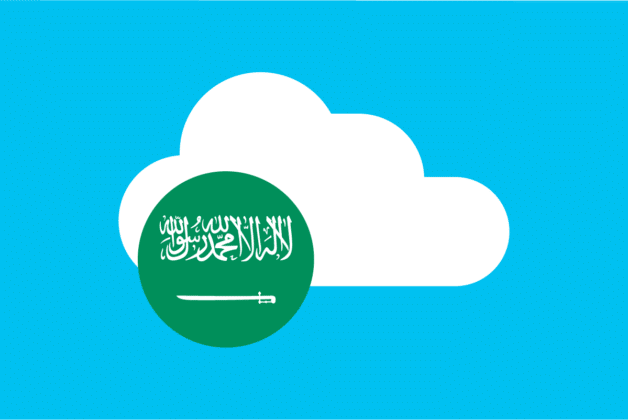

 Giuliano Biasci - 8 April, 2021 - 7 ’ read
Giuliano Biasci - 8 April, 2021 - 7 ’ readIncluded in Imagicle Call Analytics – Spring Release 2021 – with no additional cost (you just need to have an active ImagicleCare contract on your subscription plan!), these reports are available for all customers using Cisco UCM, even on-prem. Thanks to our dedicated tool for Cisco, in fact, it will be possible to analyze the activities of all users, including those who have not yet connected their UCM to the cloud. Yes, guys, it’s Imagicle!
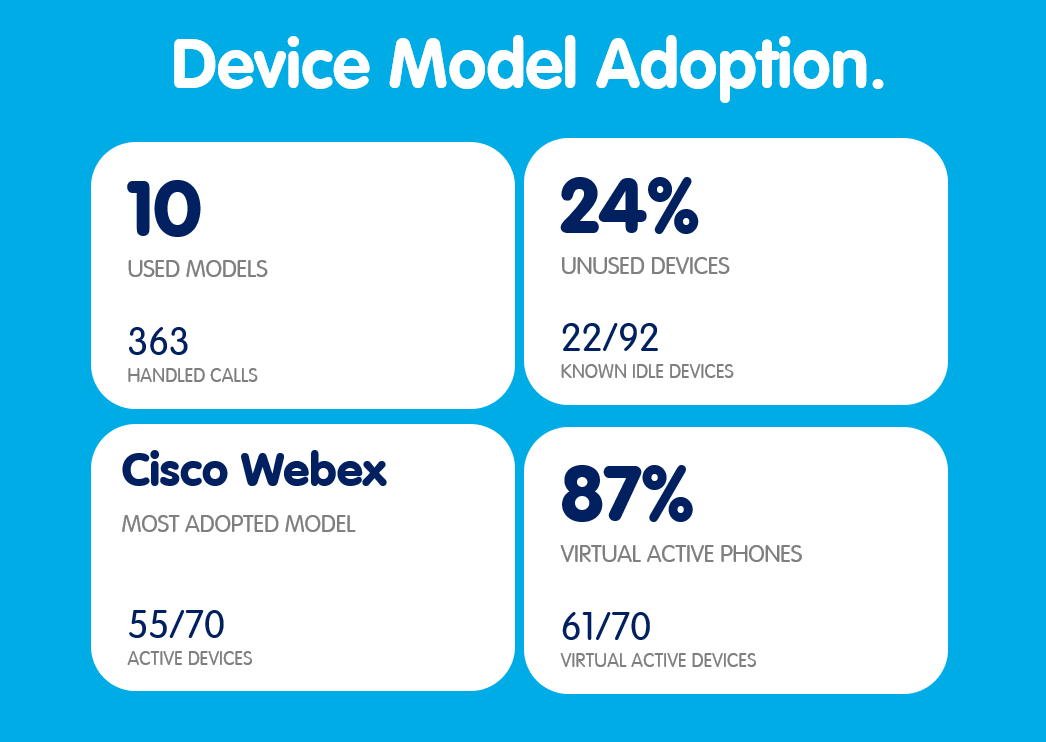

Used models: it tells you the number of phone models used to make at least one call during the survey period and the total number of calls handled by all phones, to get a general idea of how many phones are being used across the company and how;
 Unused devices: the number of devices that were never used in the survey period. This value is expressed both as a percentage of the total number of devices and as an absolute number, and it’s useful to track the actual adoption of each model. Could it be time to cut costs and optimize resources by getting rid of some unused devices?
Unused devices: the number of devices that were never used in the survey period. This value is expressed both as a percentage of the total number of devices and as an absolute number, and it’s useful to track the actual adoption of each model. Could it be time to cut costs and optimize resources by getting rid of some unused devices? Most adopted model: the highest number of active devices in the survey period compared with the total number of devices for a given phone model. Knowing what phone model is the most used among employees can really simplify core decision about the work tools to adopt in the company. Which model are your most active operators using?
Most adopted model: the highest number of active devices in the survey period compared with the total number of devices for a given phone model. Knowing what phone model is the most used among employees can really simplify core decision about the work tools to adopt in the company. Which model are your most active operators using? Virtual active phones: the percentage of virtual phones out of the total number of active phones in the survey period. Do employees prefer softphones or physical phones? How does the rapid shift to smart working affect that preference? Which type leads to higher productivity, especially if your organization is migrating to a home-office model?
Virtual active phones: the percentage of virtual phones out of the total number of active phones in the survey period. Do employees prefer softphones or physical phones? How does the rapid shift to smart working affect that preference? Which type leads to higher productivity, especially if your organization is migrating to a home-office model?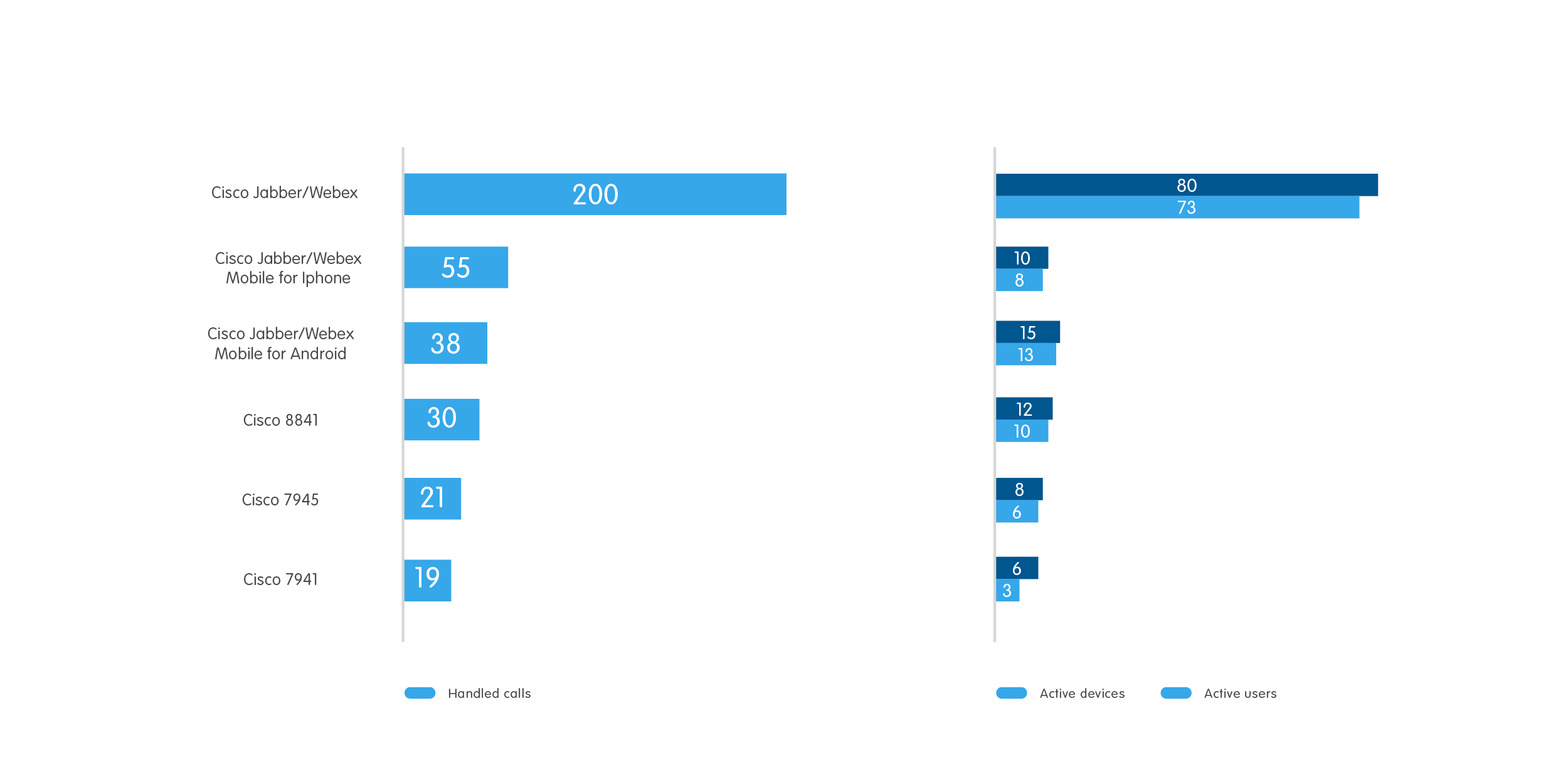
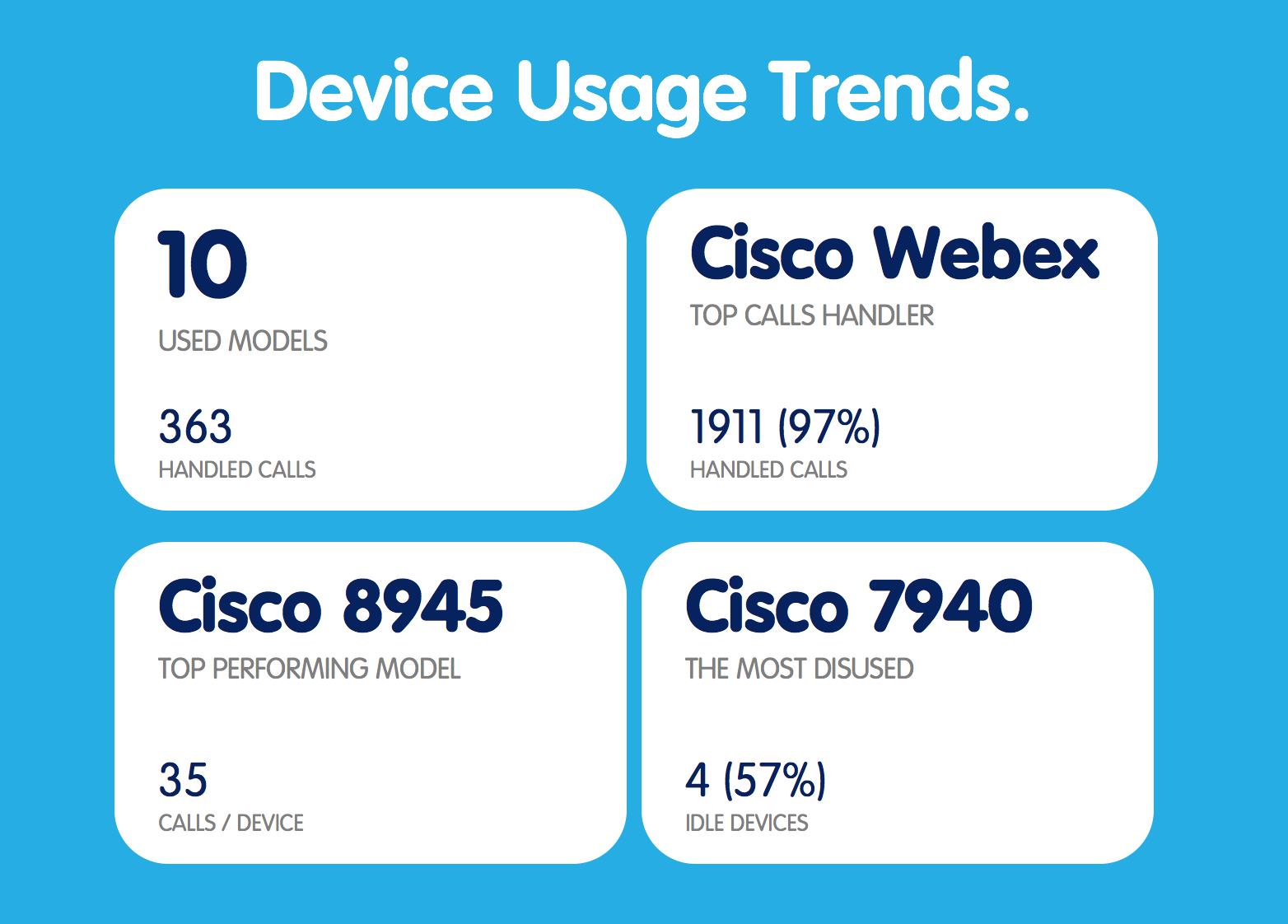

 Top calls handler: it’s the phone model that handled most calls during the survey period. It tells you the number of calls handled by the model in question and the percentage they represent in the total number of calls handled in a specific time window. Is it the one you expected or were you on the wrong track?
Top calls handler: it’s the phone model that handled most calls during the survey period. It tells you the number of calls handled by the model in question and the percentage they represent in the total number of calls handled in a specific time window. Is it the one you expected or were you on the wrong track? Top performing model: it’s the phone model with the highest average number of calls handled per device. It tells you the average number of calls handled by the analyzed model in a specific time window. Detecting the most effective model is crucial to correctly allocate resources: are the most active users working with the phone that suits them best?
Top performing model: it’s the phone model with the highest average number of calls handled per device. It tells you the average number of calls handled by the analyzed model in a specific time window. Detecting the most effective model is crucial to correctly allocate resources: are the most active users working with the phone that suits them best? The most disused: it’s the active phone model with the highest number of unused devices. It tells you the percentage of inactive devices out of the total number of devices for the analyzed model. Is it time to get rid of an old model or do you have a problem with the adoption of a new device?
The most disused: it’s the active phone model with the highest number of unused devices. It tells you the percentage of inactive devices out of the total number of devices for the analyzed model. Is it time to get rid of an old model or do you have a problem with the adoption of a new device? 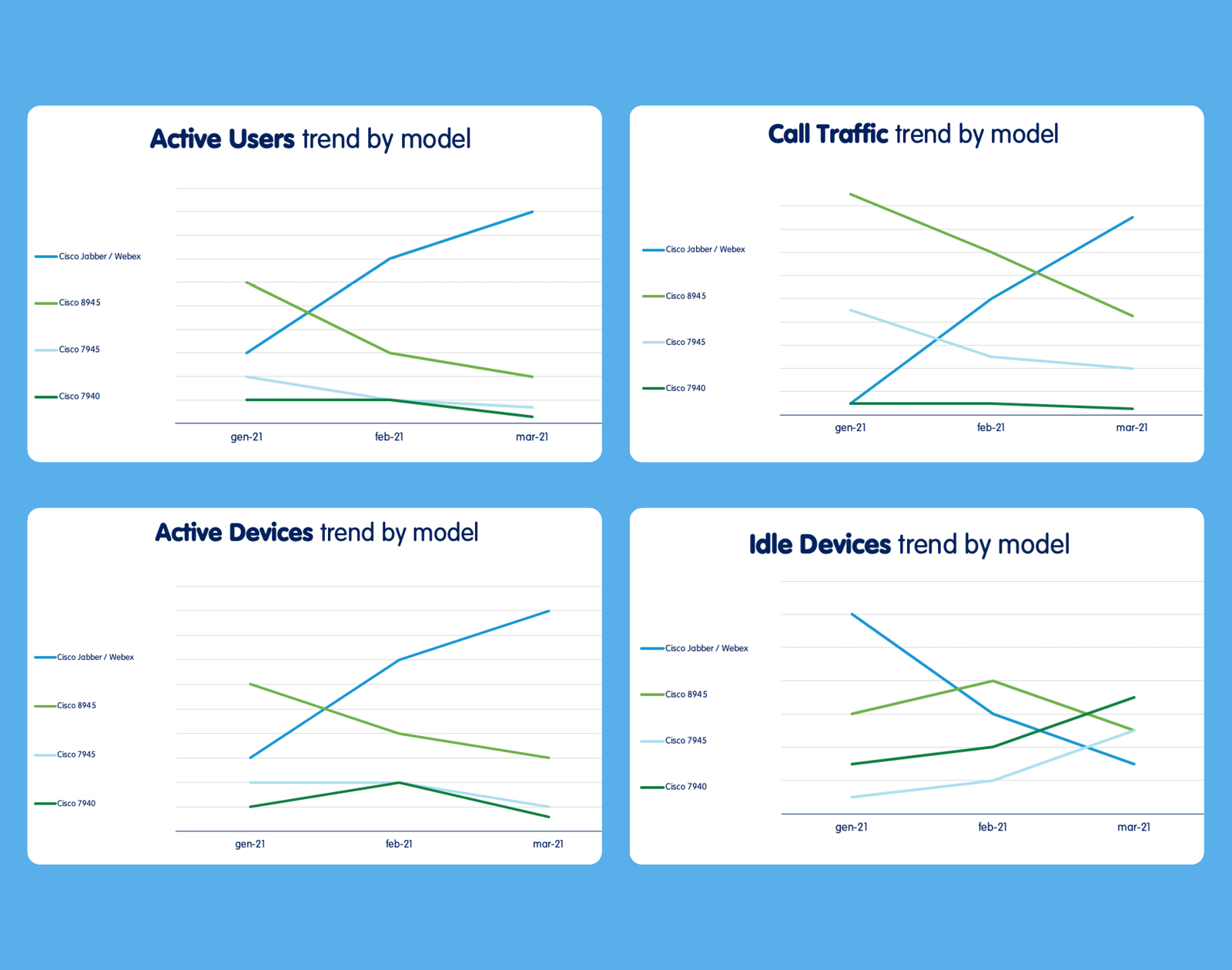
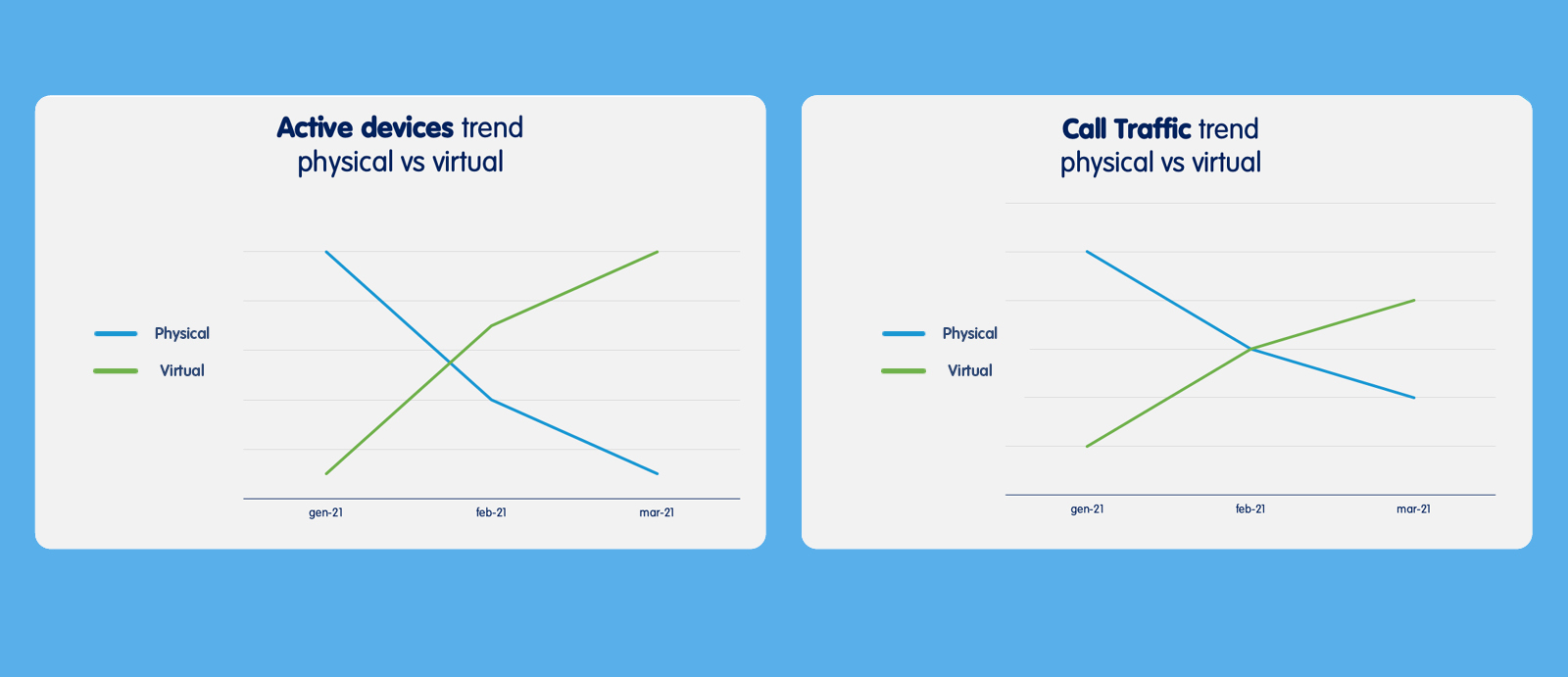
0 Comments